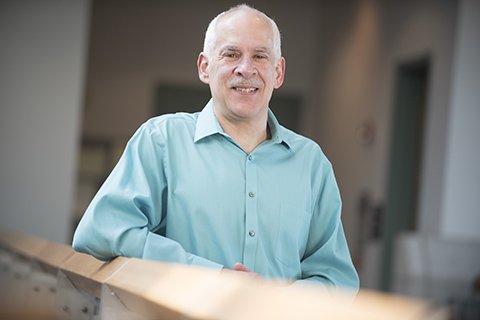Robert Tranquillo: Living Valves for Growing Hearts

Written by Greg Breining
An adult with a heart valve defect may endure open-heart surgery to replace the malfunctioning valve with a mechanical replacement or valve from a pig.
A growing child, however, has it much worse. “That child would need two, three, sometimes as many as five open-heart surgeries as they continue to put in larger and larger valves, which, of course, is a devastating situation for the child and the family,” said Tranquillo.
“So if you can make a valve that would actually grow and maintain its function, that would have a huge, huge impact for this particular patient population,” he said.
That is what members of Tranquillo’s lab are trying to do—develop a heart valve that can be implanted once and, with the help of a patient’s own cells, grow with the patient.
Tranquillo’s work so far has been confined to sheep. He extracts sheepskin cells called fibroblasts, a common cell that produces collagen and other fibers. He mixes the cells into a watery gel with a dilute network of fibrin protein fibers (the material that enables blood to clot) and pours the gel into a tubular mold. The cells multiply and exert traction forces to compact the gel, aligning and consolidating the fibers. The signals the cells use to then align with the fibers remain a mystery. Nonetheless, after about two weeks, the cells have created a tube with fibers and cells aligned around the circumference nearly one inch in diameter and two inches long, a bit larger than typical rigatoni.
Unfortunately, the engineered tube is far too weak to implant as a vessel or valve. So Tranquillo puts it in a bioreactor to stretch it repeatedly while bathing it in nutrients. “We feed them and we exercise them,” he said. “The cells are getting stimulated to produce collagen and other proteins that they deposit in this matrix of aligned fibers. After several weeks, the engineered tube has the stiffness and strength of a native artery or heart valve, sometimes even stronger.”
Now comes the counterintuitive part—after the cells have built up this tube, Tranquillo strips them out with detergent, leaving only the collagen. He then stitches one tube inside another over a small frame to create something that looks like the heart’s tricuspid valve. Fluid blows through the valve in one direction, but pressure from the other direction causes the end of the inner tube to slam shut.
Tranquillo has transplanted these tissue-engineered heart valves in sheep for up to six months. The sheep’s body rapidly deposits cells on the structure, creating a living tissue, a result of the regenerative processes induced by the properties of the engineered matrix tubes from which the valves are constructed. One big question remains: Will the valve grow?
Tranquillo anticipates clinical trials in humans will be possible soon. “I would say we’re very close to one that would work for an adult,” he said. “The harder problem is trying to make a valve that works in kids, because unlike the adult, of course, the valve needs to be able to grow to have a big impact.”
